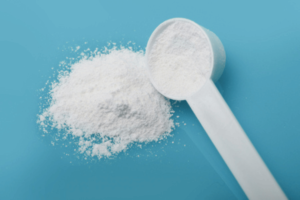Carboxymethyl Cellulose (CMC) and Hydroxypropyl Methylcellulose (HPMC) are both important cellulose derivatives widely used in various industries, including food, pharmaceutical, and construction. Despite their similar origins, they exhibit distinct chemical structures and properties, leading to different applications and functionalities.
Chemical Structure and Modification
- Carboxymethyl Cellulose (CMC):
- Origin: Derived from cellulose, a natural polymer and a primary component of plant cell walls.
- Chemical Modification: In CMC, cellulose undergoes a process known as carboxymethylation. This involves substituting some of the hydroxyl (-OH) groups in the cellulose molecule with carboxymethyl groups (-CH2-COOH).
- Resulting Properties: This substitution renders CMC water-soluble and gives it the ability to act as a thickening agent, stabilizer, and water-retaining agent.
- Hydroxypropyl Methylcellulose (HPMC):
- Origin: HPMC is also a modified form of cellulose.
- Chemical Modification: The modification process involves the introduction of methyl (-CH3) and hydroxypropyl (-CH2CHOHCH3) groups into the cellulose backbone.
- Resulting Properties: These modifications make HPMC soluble in water at lower temperatures, but it forms a gel at higher temperatures. It is also resistant to enzymatic breakdown and offers more stability over a wide pH range.
Solubility and Viscosity
- CMC:
- Solubility: Soluble in water irrespective of temperature.
- Viscosity: The viscosity of CMC solutions can be controlled by adjusting the degree of substitution and molecular weight. It is generally used in applications where high viscosity is required.
- HPMC:
- Solubility: Soluble in cold water, forming a clear solution. It exhibits thermogelling properties, meaning it gels upon heating.
- Viscosity: The viscosity of HPMC can also be modified and is crucial in applications like food additives and construction materials where gel formation is desired.
Applications
- CMC:
- Food Industry: Used as a thickener, stabilizer, and to improve mouthfeel in ice creams, baked goods, and sauces.
- Pharmaceuticals: Employed as a binder and disintegrant in tablet formulations.
- Personal Care: Found in toothpaste and other personal hygiene products for its thickening properties.
- HPMC:
- Food Industry: Acts as an emulsifier, thickening agent, and stabilizer; used in products like ice cream and gluten-free baking to improve texture.
- Pharmaceuticals: Used in controlled-release drug formulations due to its gelling properties and stability.
- Construction: Utilized in the production of construction materials like cement and plaster for its water retention and adhesive properties.
Stability and Biodegradability
- CMC:
- Generally stable under a wide range of temperatures and pH.
- Biodegradable and non-toxic, making it environmentally friendly.
- HPMC:
- Exhibits enhanced stability in the presence of enzymes and over a broader pH range.
- Also biodegradable and considered safe for various applications.
| Feature | Carboxymethyl Cellulose (CMC) | Hydroxypropyl Methylcellulose (HPMC) |
|---|---|---|
| Chemical Modification | Substitution of hydroxyl groups with carboxymethyl groups (-CH2-COOH) | Introduction of methyl (-CH3) and hydroxypropyl (-CH2CHOHCH3) groups |
| Solubility | Soluble in water at all temperatures | Soluble in cold water; forms a gel at high temperatures |
| Viscosity | Viscosity varies with the degree of substitution and molecular weight; generally higher viscosity | Viscosity can be controlled; exhibits thermogelling properties |
| Applications in Food Industry | Used as a thickener, stabilizer, and to improve mouthfeel | Acts as an emulsifier, thickening agent, and stabilizer; used in gluten-free baking |
| Applications in Pharmaceuticals | Used as a binder and disintegrant in tablet formulations | Employed in controlled-release drug formulations due to gelling properties |
| Other Applications | Used in personal care products like toothpaste | Utilized in construction materials for water retention and adhesive properties |
| Stability | Stable under a wide range of temperatures and pH | Enhanced stability in the presence of enzymes and a broader pH range |
| Biodegradability | Biodegradable and non-toxic | Also biodegradable and considered safe for use |
Conclusion
In conclusion, while Carboxymethyl Cellulose (CMC) and Hydroxypropyl Methylcellulose (HPMC) are both cellulose derivatives, their differences in chemical structure result in distinct properties and applications. CMC is known for its excellent solubility and thickening properties, making it suitable for food and pharmaceutical applications. In contrast, HPMC’s unique thermogelling and enzyme-resistant properties make it versatile for use in food products, controlled drug delivery systems, and construction materials. Understanding these differences is crucial for selecting the appropriate cellulose derivative for specific industrial applications.





